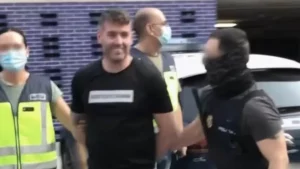
Inside Iran’s Thriving Black Market for Starlink Terminals
Since Washington granted SpaceX permission to operate its satellite internet service two years ago, a clandestine global network of smuggling and advocacy has been quietly revolutionizing the lives of thousands in Iran. Despite being banned by the Iranian government, which considers it a threat to the regime’s digital control, an underground market for Starlink terminals has emerged.
The black market has become a lifeline for those seeking uncensored access to the internet, as the Islamic Republic maintains one of the most restrictive online environments globally. The government’s strict censorship has led to protests and calls for action from citizens, who are desperate for a means of communication free from state control. For them, Starlink terminals have become the key to unlocking a new level of connectivity.
In September 2022, protests erupted in response to the police killing of 22-year-old Mahsa Amini, who had been detained and allegedly beaten while in custody for failing to comply with Iran’s dress code. To quell the uprising, the government shut down the internet, a tactic it has employed numerous times to suppress dissent. In response to this crisis, the U.S. Treasury and State Departments provided an exception to sanctions for communications services, paving the way for Starlink’s entry into the Iranian market.
Within three days of Musk’s announcement, Starlink service was activated in Iran, further cementing its significance as a beacon of hope for those seeking freedom from government censorship. The move has been hailed by activists and advocates for human rights, who see it as a powerful tool in their fight against oppression.
One such individual is Mehdi Yahyanejad, an Iranian-American activist based in Los Angeles. He used funds from local non-profits and private donors to purchase approximately 100 Starlink terminals and distribute them among his contacts near Iran. These individuals then smuggled the devices into the country, enabling activists and others to access uncensored information.
The efforts of Yahyanejad and other proponents of online freedom have led to significant improvements in the design of Starlink terminals for Iranian users. The company has reportedly added foldable pole mounts, allowing devices to be more easily transported by backpack, as well as detachable Ethernet cables that can be replaced if needed.
For those using these modified terminals, the benefits are undeniable. Mohammad, an Iranian individual who requested anonymity to protect his identity, described the transformative impact of Starlink on his daily life and work. He acknowledged the risks involved with his new connection but was willing to take them in order to gain faster and more reliable access to the internet.
Mohammad’s situation is not unique; many others have followed suit, using NasNet, a Telegram channel focused on promoting Starlink use among Iranians, to source their devices. The channel also provides YouTube tutorials covering device setup and troubleshooting, helping users navigate any technical issues that may arise.
As for the government’s reaction to this phenomenon, it remains unclear. In recent times, they have appealed to the Telecommunications Union, a United Nations agency based in Geneva, Switzerland, requesting Starlink be shut down due to its lack of visibility and ability to transport devices easily by backpack. Despite these concerns, the impact of Starlink terminals cannot be overstated.
Mohammad has taken steps to minimize his exposure by concealing his device inside his home, covered by a black curtain, due to distrust in his neighbors. This has resulted in slower internet speeds than he initially expected, but he still believes it is “so much better” than his previous connection.
The Starlink phenomenon has garnered significant attention globally, with Elon Musk’s company reportedly nearing an agreement with the Yemeni government and making its first X post from a satellite in space.
Source: www.forbes.com


